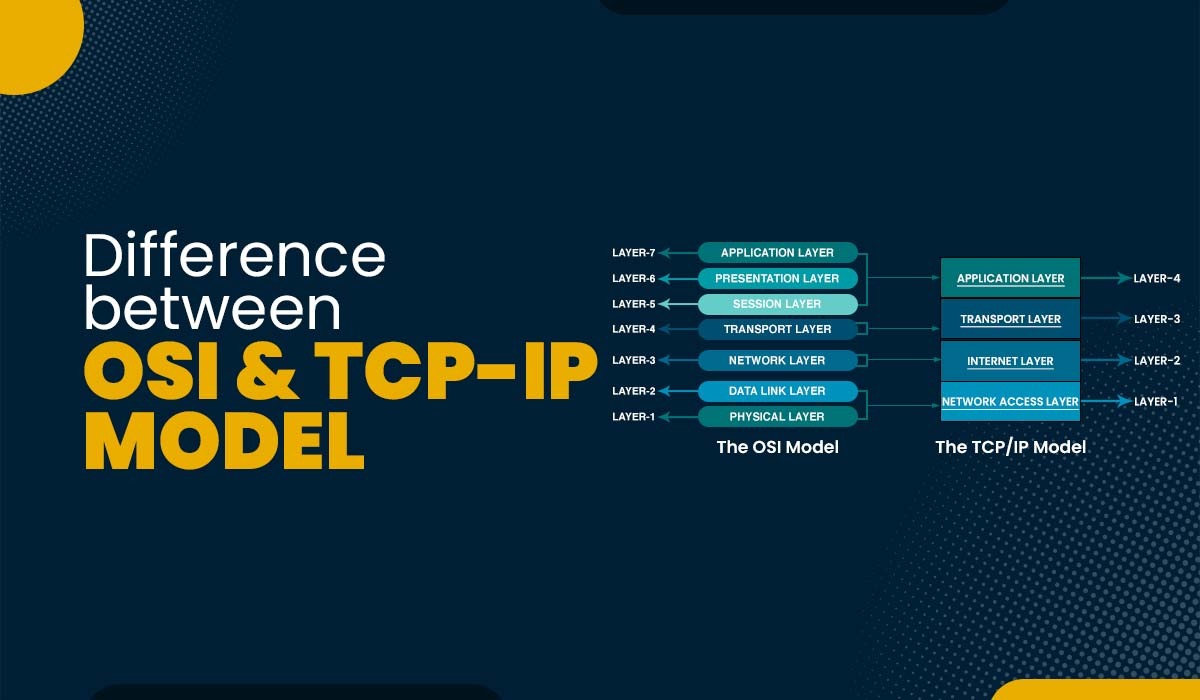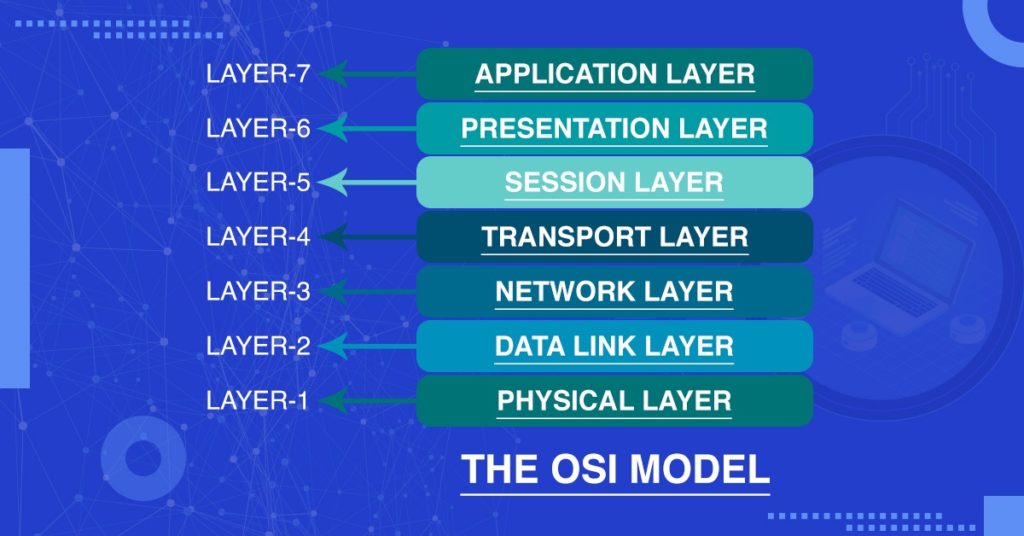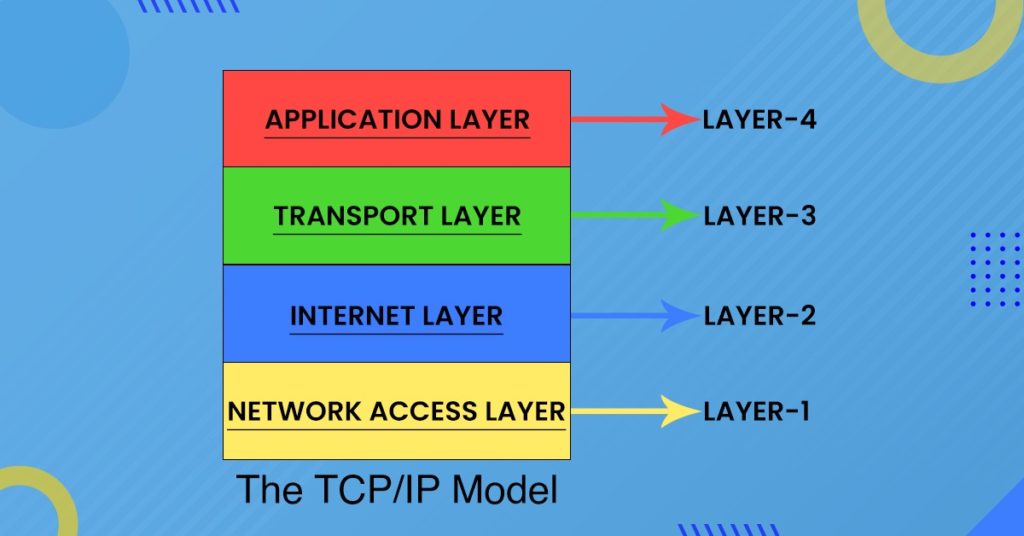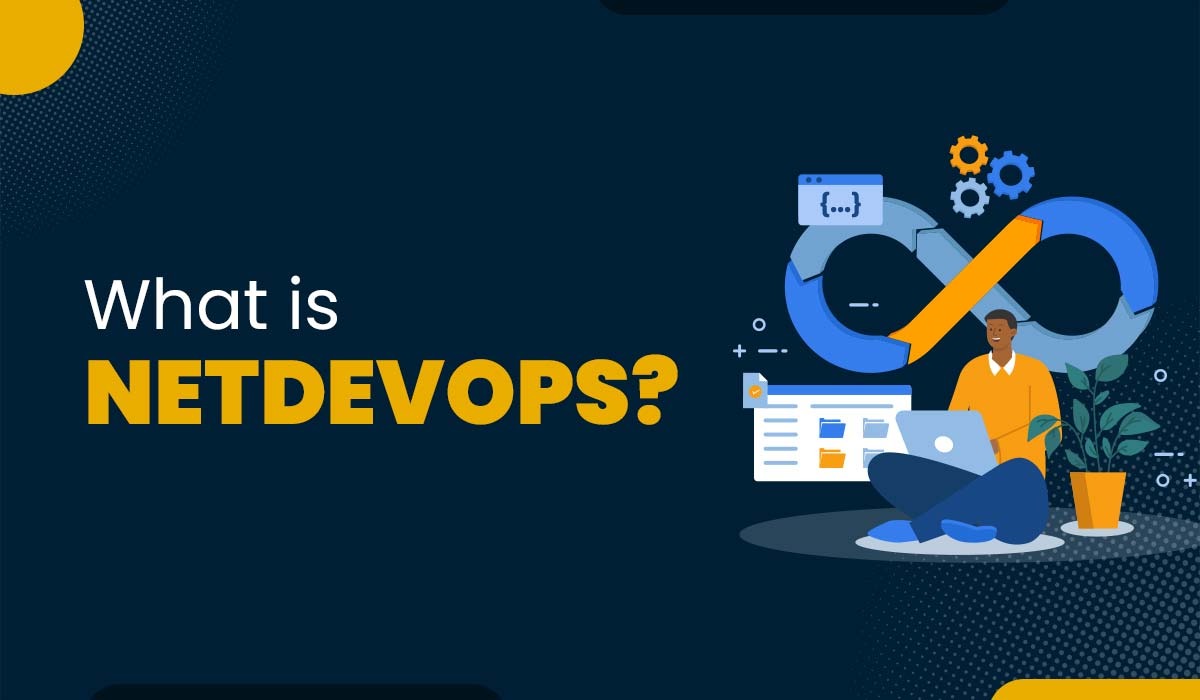Difference Between OSI and TCP-IP Model

Understanding the fundamental structures and protocols that govern computer networks is essential for anyone working in the field of networking and cybersecurity. Two well-known models that serve as the backbone of network communication are the OSI (Open Systems Interconnection) model and the TCP/IP (Transmission Control Protocol/Internet Protocol) model. While both models provide a framework for understanding how data is transmitted and received across networks, they differ in their approach and organization. In this blog, we will compare the OSI model with TCP/IP model and understand the difference between OSI and TCP-IP Model. Still, before moving to the differences, we need to understand both these models and their layers. So, let’s start with the OSI model of computer networking. OSI stands for Open System Interconnection. The OSI Model was developed by (ISO) International Standard organization to help standardize communication between computers. The original objective behind the OSI model of computer networking was to make communication possible between two different vendors. Because, when the internet was growing at the beginning of the time, different vendors could not communicate with each other and, OSI Model came as the standard model for discussing, teaching, and learning the networking procedures in the field of Information technology. So, the OSI model was developed, but it was never implemented and remained as just a reference model for study purposes only. There are 7 layers in OSI Model. These are seven of the OSI Model Layers. Listed below are the five advantages of the OSI (Open Systems Interconnection) model: The TCP/IP Model in Computer Network was designed by the Department of Defense (DOD), and it is based on standard protocols. The TCP/IP model is also known as IP Stack, and this model is practically being implemented. This model is a widely adopted model due to its simplicity, and it is also known as the concise version of OSI model. As compared to OSI Model, there are 4 TCP layers which are: So, there are 7 layers in the OSI Model whereas in TCP/IP, we only have 4 layers. Here are some of the advantages of the TCP-IP Model: The disadvantages of the TCP/IP model are: Now, let’s see the comparison of OSI Model vs TCP-IP Model. These are the main difference between OSI and TCP-IP model. You can best learn about OSI and TCP/IP networking model in Cisco CCNA 200-301 training by PyNet Labs. The TCP/IP model consists of four layers and is widely used for Internet communication, while the OSI model consists of seven layers and is primarily a reference model. The TCP/IP model is more flexible and widely adopted, whereas the OSI model offers a more comprehensive approach to networking but has limited implementation. Both the TCP/IP model and the OSI model have a layered structure, describe the flow of communication, and support protocol independence. They both use data encapsulation and handle segmentation and reassembly. However, the TCP/IP model is more widely used, particularly in relation to the Internet. The TCP/IP protocol refers to the specific suite of communication protocols used for network communication. The TCP/IP model, on the other hand, is a conceptual framework that categorizes and organizes these protocols into four layers to understand their functionality and interaction within the network. In practice, the TCP/IP model is predominantly used in networking, especially for the Internet and modern networks. The TCP/IP model’s widespread adoption is due to its close association with the development and functioning of the Internet. While the OSI model provides a conceptual reference framework, it is not as commonly implemented as the TCP/IP model. In this blog, we have discussed the difference between OSI and TCP-IP Model ad also pointed out the similarities between the two. In conclusion, both the TCP/IP and OSI models serve as essential frameworks for understanding and implementing network protocols. The TCP/IP model, with its practicality and flexibility, has become the standard model for the Internet and modern networks. Its advantage lies in its wide adoption, efficiency, and alignment with real-world networking practices. On the other hand, while the OSI model offers a comprehensive and modular approach to networking, its disadvantage is its limited implementation. Despite this, both models have played a crucial role in shaping the networking industry and have provided valuable insights into the layered nature of network communication. Understanding these models is essential for networking professionals, enabling them to navigate the complexities of modern networking and ensure seamless communication across the globe. Also, you can watch this video and learn more, We hope you liked this comparison of OSI Model vs TCP-IP Model, do share your valuable feedback in the comment box below and don’t forget to subscribe to our free newsletter to never miss an update.Introduction
What is OSI Model?
The OSI Model Layers

Advantages of OSI Model
Disadvantages of OSI Model
What is TCP-IP Model?
TCP Layers

Advantages of TCP-IP Model
Disadvantages of TCP-IP Model
Similarities between OSI and TCP-IP Model
Difference between OSI and TCP-IP Model
Parameters OSI Model TCP-IP Model Full Form Open Systems Interconnection Transmission Control Protocol/Internet Protocol Layers OSI Model has 7 Layers TCP/IP Model has only 4 Layers Development It was developed by ISO It was developed by DOD Usage Its the reference model used for study purposes, never implemented This is the concise version of OSI, and it is logical model which is being implemented Approach It follows a vertical approach It follows a horizontal approach Service Provides quality services Doesn’t provide quality services Dependency It is a protocol-independent standard, and it acts as a communication gateway between network and end-user. It is based on standard protocols. This is a protocol for communication that allows hosts to connect to networks. Delivery It guarantees the delivery of package It doesn’t guarantee package delivery Reliability Less Reliable Very Reliable Ease of Change Changes can be done easily in this model It is not easy to make changes in TCP/IP Model. Frequently Asked Questions
Q1 – What is the difference between TCP IP model and OSI model?
Q2 – What are the similarities between TCP and OSI models?
Q3 – What is the difference between TCP IP protocol and TCP IP model?
Q4 – Do we use OSI model or TCP IP model?
Conclusion







